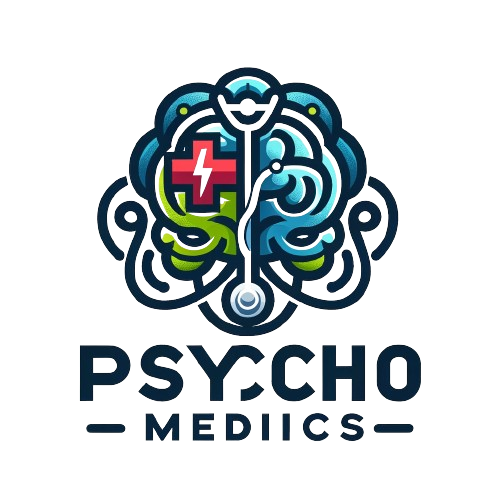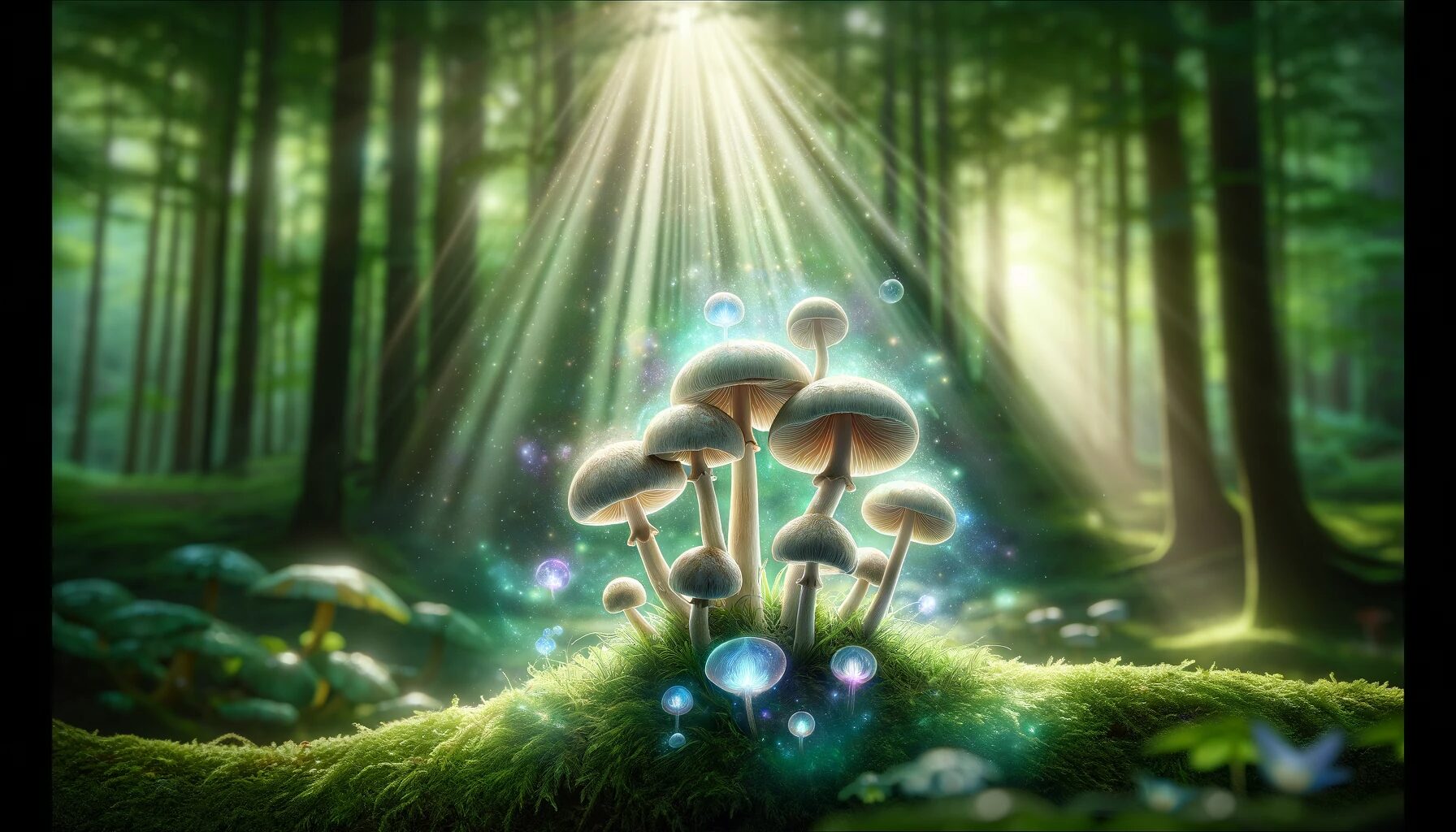In recent years, there has been a growing interest in the study and use of psilocybin, a naturally occurring psychedelic compound. Found in over 200 species of fungi, commonly known as “magic mushrooms,” psilocybin has been used for centuries in various cultural and religious rituals. Its ability to induce profound psychedelic experiences has piqued the curiosity of modern science, leading to research into its potential therapeutic benefits.
Historically, psilocybin has played a significant role in indigenous practices, often used in spiritual ceremonies to promote healing and self-discovery. Today, this compound is at the forefront of a renaissance in psychedelic research, with studies investigating its potential to treat a range of mental health conditions, including depression, anxiety, and PTSD. This resurgence of interest has brought with it a need for a deeper understanding of psilocybin, particularly in terms of dosage, effects, and safety.
The world of psilocybin is complex and multifaceted. Dosage plays a crucial role in shaping the psychedelic experience, making it essential to have a thorough understanding of how much to take, what effects to expect, and what risks might be involved. This guide aims to demystify psilocybin dosage, providing a comprehensive overview for both novices and experienced users, with a focus on responsible and informed use.
In this article, we will delve into the nuances of psilocybin as a psychoactive compound, explore the various dosages and their corresponding effects, and discuss the important safety considerations and legal implications. Whether you are a researcher, a healthcare professional, or simply someone curious about this fascinating substance, this guide offers a detailed and informative insight into the world of psilocybin.
What is Psilocybin?
Psilocybin is a naturally occurring psychedelic compound, a primary active ingredient found in various species of fungi, popularly known as “magic mushrooms.” These mushrooms belong to genera like Psilocybe, Panaeolus, and Copelandia, among others.
The compound was first isolated and identified in 1958 by Swiss chemist Dr. Albert Hofmann, who is also known for discovering LSD (lysergic acid diethylamide). Psilocybin is a prodrug, meaning it is biologically inactive until it is converted by the body into psilocin, its active form. This conversion occurs rapidly after ingestion, and psilocin is primarily responsible for the psychedelic effects experienced.
Chemically, psilocybin is classified as a tryptamine, sharing structural similarities with the neurotransmitter serotonin. This resemblance allows it to bind to and activate serotonin receptors in the brain, particularly the 5-HT2A receptor. The activation of these receptors is believed to lead to the various effects of psilocybin, including alterations in perception, mood, and cognition.
In nature, psilocybin serves as a defense mechanism for the mushrooms. The psychedelic effects it produces in animals (including humans) are thought to be a deterrent against predation. However, for humans, these effects have been harnessed for both recreational and ceremonial use throughout history.
Therapeutic Uses and Research
The exploration of psilocybin’s therapeutic potential has emerged as a particularly intriguing area of modern medical research. Initially, in the mid-20th century, psilocybin and other psychedelics showed promise in psychiatry, but political and cultural factors led to the cessation of this research for several decades. Recently, there has been a renaissance in psychedelic research, with psilocybin at the forefront due to its potential to treat a variety of mental health conditions.
Depression: One of the most significant areas of psilocybin research focuses on its ability to treat depression, especially in cases where patients are resistant to traditional treatments. Studies have shown that psilocybin therapy, when combined with psychological support, can lead to rapid and substantial reductions in depressive symptoms. The compound appears to ‘reset’ brain activity in regions associated with emotional processing, offering relief that can last weeks or even months after treatment.
Anxiety and End-of-Life Distress: Psilocybin has also shown promise in reducing anxiety, particularly in patients with life-threatening cancer diagnoses. This form of therapy helps alleviate the existential distress and fear of death, improving patients’ quality of life. These benefits are not only attributed to the biochemical effects of psilocybin but also to the profound, often spiritual, experiences that the substance can induce.
Addiction: Another emerging area of research is the use of psilocybin in treating substance abuse disorders, including alcohol and tobacco addiction. Preliminary studies suggest that psilocybin therapy can significantly increase abstinence rates, potentially by reducing cravings and altering neural pathways associated with addictive behaviors.
Neuroscience and Brain Connectivity: Beyond these specific conditions, psilocybin research provides valuable insights into neuroscience and the nature of consciousness. Psilocybin has been found to increase ‘neural connectivity’ – the brain temporarily forms new connections across different regions. This could explain the often-reported sensation of ‘expanded consciousness’ and might also be why psilocybin can disrupt entrenched patterns of thought and behavior.
Safety and Challenges: While research indicates that psilocybin is relatively safe when administered in controlled settings, challenges remain. Ensuring the safety and efficacy of psilocybin therapy outside of research environments, addressing legal and ethical concerns, and understanding the long-term effects are crucial areas for ongoing investigation.
Future Directions: The future of psilocybin research is poised at an exciting juncture. With increasing interest from the medical community and the public, along with changes in legal status in some regions, psilocybin could potentially be integrated into mainstream psychiatric treatment. However, this integration requires rigorous clinical trials, standardization of dosing protocols, and a comprehensive understanding of its psychological effects.
Dosage: General Overview
Understanding the appropriate dosage of psilocybin is crucial, as it significantly influences the intensity and nature of the psychedelic experience. Psilocybin dosages are generally measured based on the dried weight of the mushrooms, but the exact concentration of psilocybin can vary widely among different species and even within mushrooms from the same batch. This variability makes standardizing and prescribing precise dosages challenging.
Variability in Potency: The psilocybin content in dried magic mushrooms typically ranges from about 0.2% to 0.5%. However, this concentration can vary due to factors such as the mushroom species, growing conditions, and harvest time. For instance, Psilocybe azurescens is known for its high psilocybin content, while Psilocybe semilanceata contains relatively lower amounts.
Dosage Categories: Psilocybin dosages are commonly categorized into several ranges, each associated with different levels of intensity in the psychedelic experience:
- Microdose (0.1g to 0.3g dried mushrooms): A microdose is a sub-perceptual amount that doesn’t induce significant psychedelic effects. Users often report subtle improvements in mood, creativity, and focus. Microdosing is typically done in a regimented manner, such as every few days, and is becoming popular for its potential cognitive and emotional benefits.
- Low Dose (0.5g to 2g): This dose range may induce mild perceptual enhancements, such as brighter colors and enhanced senses, along with changes in thought patterns. It’s often chosen for social gatherings or for those new to psychedelics.
- Moderate Dose (2g to 3.5g): This is the typical ‘recreational’ dose range, where users experience more pronounced psychedelic effects, including visual and auditory hallucinations, profound introspection, and alterations in the perception of time and space.
- High Dose (Above 3.5g): High doses can lead to intense experiences, often described as life-altering. These experiences can include powerful hallucinations, deep emotional release, and encounters with mystical or spiritual states. Such doses should be approached with caution and ideally under the guidance of an experienced facilitator.
Setting and Individual Factors: The effects of any given dose can be influenced by the user’s body weight, metabolism, psychological state, and the environment (referred to as ‘set and setting’). A dose that leads to a profound experience for one person might have a much milder effect on someone else.
Responsible Use: Due to the variability and potency of psilocybin, starting with a lower dose is generally recommended, especially for those who are inexperienced with psychedelics. Gradually increasing the dose in subsequent sessions can help users find their optimal dosage level.
Legality and Safety: It’s important to note that in many countries, possession and use of psilocybin mushrooms are illegal. Additionally, because of the risks associated with psychedelic experiences, particularly at higher doses, supervision by a knowledgeable and sober individual is advised.
Factors Influencing Psilocybin’s Effects
The effects of psilocybin are influenced by various factors including the user’s body weight, metabolism, emotional state, and environment. This variability makes it crucial to approach dosing with caution.
The Psilocybin Experience
The effects of psilocybin can vary from mild perceptual changes to intense psychedelic experiences. Common experiences include altered perception of time, enhanced colors, visual distortions, euphoria, and introspective insights. The experience typically lasts between 4 to 6 hours.
Risks and Safety Considerations
While psilocybin is considered relatively safe and non-addictive, it is not without risks. Potential side effects include nausea, dizziness, anxiety, and panic attacks. It’s crucial to have a sober, experienced guide or “trip sitter” during a psilocybin experience, especially for higher doses.
Legal Status
Psilocybin remains a controlled substance in many countries. However, there is a growing movement towards decriminalization and medical research. It’s important to be aware of the legal status of psilocybin in your region.
Conclusion
Psilocybin, a compound found in magic mushrooms, has captivated human interest for centuries, from its use in ancient rituals to its potential in modern medicine. As research progresses, we are uncovering more about its capabilities to profoundly alter consciousness and potentially heal the mind. Understanding dosage is key to harnessing psilocybin’s benefits while minimizing risks.
The landscape of psilocybin usage is as vast as it is complex. From microdoses to high doses, its effects can range from subtle enhancements in creativity and mood to profound, life-altering experiences. As we navigate this terrain, safety, informed consent, and legal considerations must remain at the forefront.
FAQs
Q1: What is psilocybin?
- A1: Psilocybin is a psychedelic compound found in certain mushrooms, known for altering perception and mood.
Q2: Is psilocybin safe?
- A2: Generally safe under controlled conditions, but can cause psychological distress for some.
Q3: Can psilocybin treat mental disorders?
- A3: Research is promising for treating conditions like depression and anxiety, but it is still ongoing.
Q4: How long do psilocybin effects last?
- A4: Typically 4 to 6 hours, depending on dosage and individual factors.
Q5: Is psilocybin legal?
- A5: Illegal in many countries, but some areas are exploring decriminalization and medical use.
Q6: What’s a typical psilocybin dose?
- A6: Ranges from microdoses (0.1g-0.3g) to high doses (above 3.5g of dried mushrooms).
Q7: Is psilocybin addictive?
- A7: It’s not considered addictive and is being researched as a treatment for other addictions.
Q8: What to consider before trying psilocybin?
- A8: Your mental health, the setting, legal status, and potential risks.

Alex is a seasoned writer and researcher, specializing in psychedelic studies and mental health. Known for insightful and authoritative content, he combines extensive knowledge with a passion for exploring wellness and alternative therapies. Alex’s work is a trusted resource for readers delving into the world of mental well-being.


Leave a Reply